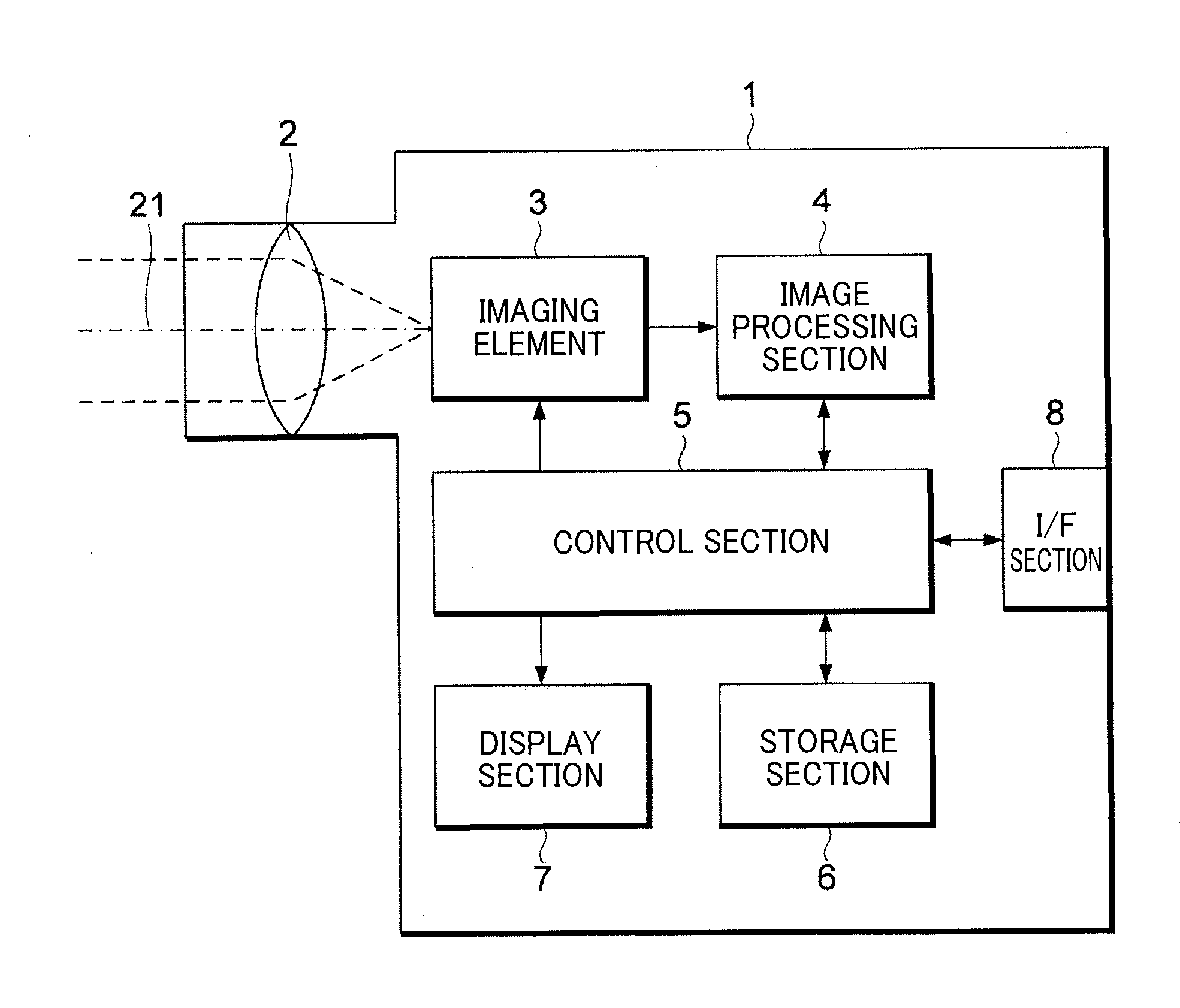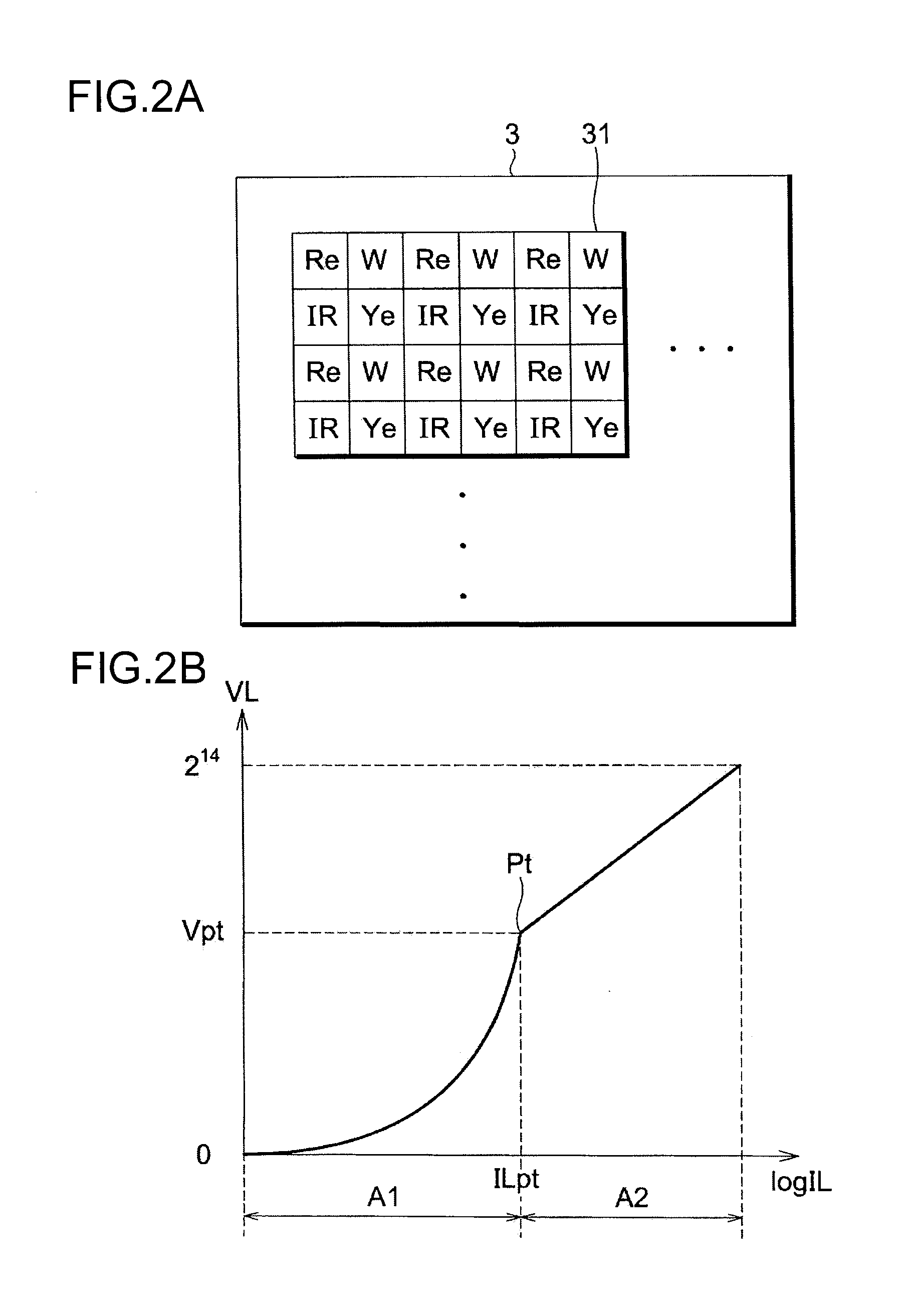Imaging Device
a technology of imaging device and image, which is applied in the direction of picture signal generator, solid-state device signal generator, television system, etc., can solve the problems of image obtained by the near infrared camera that is not monochromatic, and has a general linear photoelectric conversion characteristic that cannot accurately acquire luminance distribution on a dark or bright side, etc., to achieve enhanced s/n ratio, wide dynamic range, and prevent the effect of color signal saturation reduction
- Summary
- Abstract
- Description
- Claims
- Application Information
AI Technical Summary
Benefits of technology
Problems solved by technology
Method used
Image
Examples
first embodiment
[0134]The first embodiment as described above may also be applied to an imaging element having a configuration different from the configuration shown in FIG. 2. In the following, a second example of the configuration of the imaging element is described referring to FIG. 10 and FIG. 11. FIG. 10 is a schematic diagram showing the second example of the configuration of the imaging element.
[0135]Referring to FIG. 10, an imaging element 3 is a linear-log sensor substantially the same as the one shown in FIG. 2. The imaging element 3 has a number of pixels 31 arranged in a two-dimensional matrix. The imaging element 3 is configured in such a manner that pixels 31, in each of which one of four types of filters i.e. a blue (B) filter, a green (G) filter, a red (R) filter, and an infrared transmissive (IR) filter is provided, are regularly arranged.
[0136]In the example shown in FIG. 10, pixels 31 provided with B filters, and pixels 31 provided with R filters are alternately arranged in a cer...
second embodiment
[0161]FIG. 16 is a block diagram showing a configuration of an image processing section 4 in the
[0162]Referring to FIG. 16, the image processing section 4 has a D-range expander 49 at a position anterior to a pixel corrector 41 corresponding to the pixel corrector 41 in the first embodiment shown in FIG. 4.
[0163]The D-range expander 49 combines and generates D-range expanded original image data D3 (Ye, M, C, W) by the method described referring to FIG. 14A, based on image data D31 (Ye, M, C, W) which is obtained by an imaging operation of the imaging element 3 for the first exposure time T1, and based on image data D32 (Ye, M, C, W) which is obtained by an imaging operation of the imaging element 3 for the second exposure time T2 different from the first exposure time T1, succeeding the image data D31. Thereafter, image processing is performed with use of original image data D3. Since the configuration of the pixel corrector 41 thereafter is substantially the same as the configurati...
third embodiment
[0173]As described above, in the imaging device of the third embodiment provided with an imaging optical system, an imaging element having a knee characteristic, and an image processing section, original image data is obtained by using the imaging element which has a sensitive wavelength region including an infrared wavelength region, and selectively including a visible wavelength region, and which is composed of four types of pixels having spectral sensitivities different from each other. The imaging device is configured to extract a luminance signal including an infrared wavelength component, and a color-difference signal from the original image data; and to modulate the color-difference signal based on a high frequency component in the luminance signal including the infrared wavelength component. With this configuration, it is possible to provide the imaging device that enables to prevent fake color generation in an edge portion, resulting from the color filter arrangement of the...
PUM
 Login to View More
Login to View More Abstract
Description
Claims
Application Information
 Login to View More
Login to View More - R&D
- Intellectual Property
- Life Sciences
- Materials
- Tech Scout
- Unparalleled Data Quality
- Higher Quality Content
- 60% Fewer Hallucinations
Browse by: Latest US Patents, China's latest patents, Technical Efficacy Thesaurus, Application Domain, Technology Topic, Popular Technical Reports.
© 2025 PatSnap. All rights reserved.Legal|Privacy policy|Modern Slavery Act Transparency Statement|Sitemap|About US| Contact US: help@patsnap.com



